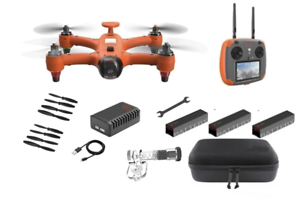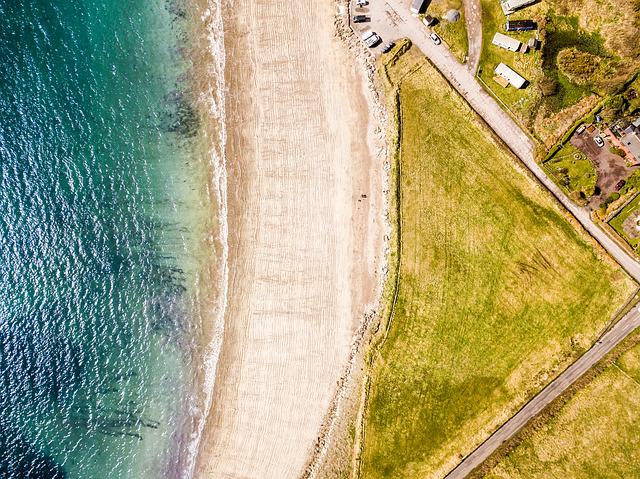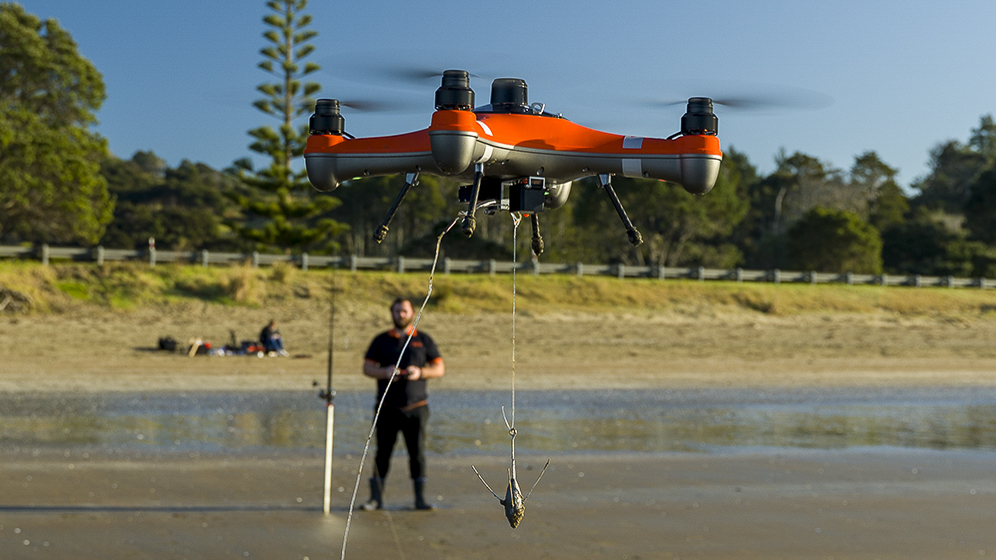
A drone can be used to view the water around your property if you're a keen fisherman living in Australia. The drones can be equipped with a variety of features, including a GPS positioning system, a GPS receiver, a GPS receiver, a GPS payload release, and an angle adjustable camera. You can also buy fishing line that you can use to fish. These lines are highly stable and reliable. One example is the SKY RIGGER drone.
The drone fishing line SKY RIGGER can be used for spotting fish.
The SKY RIGGER, a flexible fishing system for drones, allows you fish from the air using minimal effort. The system features two rotating leg clamps that can attach to various drone models. The release mechanism is designed with a bayonet-style connection and a cam-lock arm to open the line clamps quickly. Sky RIGGER doesn't require batteries unlike other drones. This drone can take all kinds of fishing techniques and is safe.
The SKY RIGGER's automatic release mechanism allows for the release of the fly when a fish strikes it. You can also manually let go of the line by using your rod or hand. This feature is available on all models of the SKY RIGGER. Before purchasing the new SKY RIGGER, it is recommended to purchase a Phantom 3. A few pros and cons of the new line system:
It has a mechanical payload release
One of the most important features of a good drone is its mechanical payload release. Many of them make it possible for the anglers easy to release the fishing lines. Some models have no release mechanism. Instead, users must "yank the fishing line" to free the drone. This can be an inconvenient process, especially for people who aren't comfortable using their hands to release the line.

A payload release mechanism is also an important feature. Payloads should be capable of releasing the drone's line once the fish has been caught. This method is not easy to use. You can't just pull the fish up and let it go. Many people have had good experiences with the DJI Phantom drone. However, this technology has not yet reached the level of fishing drones that are available on the market.
It features a GPS positioning device
Rippton, a joint venture between Australia and the Netherlands that specializes on technology-oriented fishing products, is called Rippton. It was founded to improve the success rate of anglers by creating products that increase the enjoyment of fishing. Rippton's Mobula drone includes a GPS positioning and remote release. The Mobula is able to hold bait on the surface, resist kite clips and is environmentally friendly.
It is lightweight at just 3 pounds and can fly up to 18 minutes. It also has a high-tech GPS system, allowing it to be controlled from 2,000 yards away. It has a range of 1000 meters, or half a mile, and is equipped with intelligent flight modes. The point of interest feature allows it to take high-quality photos of its surroundings. You can enjoy stunning views of fish through its high-resolution lens.
It has a failsafe feature
Aerokontiki has an emergency feature that allows it to monitor the battery level and release the fishing line if necessary. It will return to dry land if the battery runs out and continue its mission. It has industrial-grade flight controls and can operate wherever it goes without recalibration. This drone is also waterproof, so you can use it even in the most difficult water spots.

FAQ
Where can I purchase a drone?
There are many types of drones available online. Many people prefer to buy their drones online through Amazon, eBay or Walmart. Others choose to purchase their drones directly from manufacturers.
Which drone is best for beginners?
The DJI Phantom 2 Vision+ is a popular beginner drone. This drone comes with a 4K camera which can be used to take aerial photos and videos. You can easily navigate this drone using its built-in GPS system.
How high can you fly a drone without a license?
The FAA does not limit the height of a drone. They do require that you register your unmanned airplane system (UAS), which includes registration number, model number, weight, size and manufacturer's names, as well as other information.
Can I fly my drone around my area?
Yes! These are known as UAVs (unmanned air vehicles). There are several types of drones available for sale today, from small quadcopters to large fixed-wing aircraft. The FAA has recently issued new rules regarding the commercial use of UAVs, which means you can now legally fly them for business purposes. But, it is important to note that UAVs being flown near airports can interfere with air traffic control systems. Before you operate one, you need permission from local authorities.
Statistics
- According to ZipRecruiter, the minimum hourly wage of drone pilots is $20. (thedroneu.com)
- According to Indeed, a drone pilot gets paid $25.73 per hour on average in the US. (dronesgator.com)
- Research and Markets predict a growth rate of 51.1% over the next five years. (thedroneu.com)
External Links
How To
How to Fly Drones for Beginners
A drone is an unmanned aerial vehicle that can be remotely controlled and used for surveillance, aerial photography, film production, research, and other hobby purposes. Drones are a technology that has been around since World War II. DJI introduced their Phantom series of quadcopters in 2010, but commercial use only began in 2010. From beginner-friendly drones such as Parrot AR Drone 2.0 through professional-grade multirotor craft like DJI Mavic Pro, many types have been available.
There are many options for flying a drone.
-
Remote control – This technique uses a control device attached directly to your hands that allows you steer the drone around its flight path. There are two main types: Joysticks (like a radio), and On/Off switches (like an alarm clock).
-
Manual Control - Using a smartphone app, this method allows users to remotely operate the drone via GPS coordinates. The app will provide instructions and help you to locate the drone.
-
Autonomous Flying - This allows the drone to take over all of the piloting duties. It allows the drone to fly independently without any human intervention. To enable autonomous flight, the drone should have a built in camera and sensors capable recording images and data.
-
Triggered Flight – This method is very similar to manual flight. The pilot creates a route that the drone will follow until it reaches the destination. Once the programmed route has been completed, the drone returns to the base automatically.
-
Landing Gear - Some drones come equipped with landing gear that allows them to land safely if they lose power or run out of battery during flight.
-
Goggles: Some pilots use goggles in order to protect themselves against debris when operating.
-
Camera - You can capture photos and videos with your drone from the air.
-
Obstacles – Some drones have obstacle avoidance systems that stop them from colliding with obstacles.
-
Speed - Some drones reach speeds exceeding 40 mph.
-
Battery Life - Most drones are capable of lasting between 20 minutes and three hours, depending on the power that you use.
-
Some drones have a range of up to 30 miles, depending on their model.
-
Power source - Not all drones can use an external power source. Others can run on internal batteries.
-
Weight - Some drones weigh less than 1 pound, whereas other models weigh up to 4 pounds.
-
Size - From small drones that can be carried in the palm of one's hand to larger drones that weigh over 50 pounds, drones come in a variety of sizes.
-
Price - From high-end models that cost thousands of dollars to low-cost options that start at $100, all drones fall under a certain price category.